PORTWELL PCI-IDIO-16
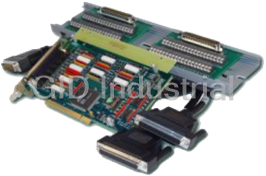
Description
Low-cost, 6.8" card that provides isolated input and output for PCI-bus computers. The card has sixteen optically-isolated digital inputs for AC or DC control signals and sixteen isolated FET outputs.
Part Number
PCI-IDIO-16
Price
Request Quote
Manufacturer
PORTWELL
Lead Time
Request Quote
Category
PCI Digital I/O Products
Specifications
Categorization Information
PCI Digital IO Products
Features
- Universal PCI, PCI-X, 3.3V and 5V compatible
- Sixteen optically-isolated, non-polarized digital inputs
- Opto-isolated channel to channel and channel to ground
- Sixteen fully protected FET outputs
- Can detect input state change and assert interrupt
- No switches or jumpers to set, all options software selectable
Datasheet
Extracted Text
MODEL PCI-IDIO-16 USER MANUAL FILE: MPCI-IDIO-16.C1h Notice The information in this document is provided for reference only. Portwell does not assume any liability arising out of the application or use of the information or products described herein. This document may contain or reference information and products protected by copyrights or patents and does not convey any license under the patent rights of Portwell, nor the rights of others. IBM PC, PC/XT, and PC/AT are registered trademarks of the International Business Machines Corporation. Printed in USA. Copyright 2001, 2005 by Portwell I/O Products Inc. All rights reserved. WARNING!! ALWAYS CONNECT AND DISCONNECT YOUR FIELD CABLING WITH THE COMPUTER POWER OFF. ALWAYS TURN COMPUTER POWER OFF BEFORE INSTALLING A CARD. CONNECTING AND DISCONNECTING CABLES, OR INSTALLING CARDS INTO A SYSTEM WITH THE COMPUTER OR FIELD POWER ON MAY CAUSE DAMAGE TO THE I/O CARD AND WILL VOID ALL WARRANTIES, IMPLIED OR EXPRESSED. Manual PCI-IDIO-16 2 Warranty Prior to shipment, Portwell equipment is thoroughly inspected and tested to applicable specifications. However, should equipment failure occur, Portwell assures its customers that prompt service and support will be available. All equipment originally manufactured by Portwell which is found to be defective will be repaired or replaced subject to the following considerations. Terms and Conditions If a unit is suspected of failure, contact Portwell' Customer Service department. Be prepared to give the unit model number, serial number, and a description of the failure symptom(s). We may suggest some simple tests to confirm the failure. We will assign a Return Material Authorization (RMA) number which must appear on the outer label of the return package. All units/components should be properly packed for handling and returned with freight prepaid to the Portwell designated Service Center, and will be returned to the customer's/user's site freight prepaid and invoiced. Coverage First Three Years: Returned unit/part will be repaired and/or replaced at Portwell option with no charge for labor or parts not excluded by warranty. Warranty commences with equipment shipment. Following Years: Throughout your equipment's lifetime, Portwell stands ready to provide on-site or in-plant service at reasonable rates similar to those of other manufacturers in the industry. Equipment Not Manufactured by Portwell Equipment provided but not manufactured by Portwell is warranted and will be repaired according to the terms and conditions of the respective equipment manufacturer's warranty. General Under this Warranty, liability of Portwell is limited to replacing, repairing or issuing credit (at Portwell discretion) for any products which are proved to be defective during the warranty period. In no case is Portwell liable for consequential or special damage arriving from use or misuse of our product. The customer is responsible for all charges caused by modifications or additions to Portwell equipment not approved in writing by Portwell or, if in Portwell opinion the equipment has been subjected to abnormal use. "Abnormal use" for purposes of this warranty is defined as any use to which the equipment is exposed other than that use specified or intended as evidenced by purchase or sales representation. Other than the above, no other warranty, expressed or implied, shall apply to any and all such equipment furnished or sold by Portwell. Manual PCI-IDIO-16 3 Table of Contents Chapter 1: Introduction................................................................................................. 5 Specification .............................................................................................................. 6 Figure 1-1: Block Diagram ...................................................................................... 7 Figure 1-2: Simplified Output Connection Diagram................................................. 8 Chapter 2: Installation................................................................................................... 9 Chapter 3: Address Selection .................................................................................... 11 Chapter 4: Programming ............................................................................................ 12 Chapter 5: Connector Pin Assignments.................................................................... 14 Table 5-1: Connector Pin Assignments ................................................................. 14 Table 5-2: Breakout Cable Pin Assignments ......................................................... 15 Manual PCI-IDIO-16 4 Chapter 1: Introduction The card is a half-size card that provides isolated digital input and output interface for PCI-Bus computers. The card has Sixteen optically-isolated digital inputs for AC or DC control signals and Sixteen solid state switch outputs. An interrupt can be generated when any of the inputs change state to free up computer resources by eliminating the need for polling the card. This card occupies eight consecutive 8- bit registers in I/O space. Inputs The isolated inputs can be driven by either AC or DC signals and are not polarity sensitive. Input signals are rectified by a diode bridge and applied to a transistor circuit that provides constant current drive to the opto-isolator independent of the amplitude on the input. Input voltages of 2.5-50VDC or AC voltages of 2V- 36Vrms can be accepted. Inputs have a 0.2V hysteresis. Each input circuit contains a switchable slow/fast filter that has a 5 millisecond time constant. The filter must be selected for AC inputs in order to eliminate response to zero crossings. The filters can also be useful with slow DC input signals in a noisy environment. The filters are under software control. All filters may be turned on by a read at base address +3. All filters may be disabled by a write to base address +3. The filters for the first eight inputs can be turned on and off individually by a write at base address +7; a value of one in the bit corresponding to the input will turn that input’s filter on, while a value of zero will turn it off. The status of the first eight input filters can be read back at the same address. Interrupts When enabled by a software read to base address +2, the card asserts an interrupt whenever any of the inputs change state. Once an interrupt has been generated and serviced, it must be cleared. A software write to base address +1 will clear an interrupt. This interrupt capability may be disabled by a software write to base address +2. Outputs The digital outputs are comprised of fully protected FET switches. The FETs have built in current limiting and are protected against short-circuit, over-temperature, ESD and inductive load transients. The current limitation is activated until the thermal protection acts. The switches are in the off- state upon power-on. Data to the output is latched by a Write to the base address and to base address+4. The On/Off status of the switches can be read back by a Read command from the base address and base address+4. Manual PCI-IDIO-16 5 Specification Digital Inputs • Number of inputs: Sixteen • Type: Non-polarized, optically isolated from each other and from the computer • Input voltage range: 2.5 to 50V DC or 2-36VrmsAC (50 to 10000 Hz) with 0.2V hysteresis • Isolation*: 500V • Input Resistance: The opto-isolator diode current is constant at 2 mA regardless of input voltage. Total input current is 4 mA maximum at 50V • Interrupts: When enabled by software, interrupts are generated when digital inputs change state • Response Time: 5 mSec w/ filter, 50 μSec w/o filter Protected FET Outputs • Number of outputs: Sixteen in two groups of 8 channels each. In each group 4 channels are totally isolated and 4 channels have a common ground • Output Type: High Side Power MOS FET Switch. Protected against short circuit, over temperature, ESD, capable of driving inductive loads • Compliance Voltage: 5-50DC Volts (customer supplied) • Current: 1A maximum (source only) • Turn-on time: Rise time: 50μsec Turn-on delay: 50μsec • Turn-off time Fall time: 50μsec. Turn-off delay: 50μsec. * Notes on Isolation: Opto-Isolators, connector and FET’s are rated for at least 500V, but isolation voltage breakdowns will vary and is affected by factors like cabling, spacing of pins, spacing between traces on PCB, humidity, dust and other environmental factors. This is a safety issue so a careful approach is required. For CE certification, isolation was specified at 40V AC and 60V DC. The design intention was to eliminate the influence of common mode. Use proper wiring techniques to minimize voltage between channels and to ground. For example, when working with AC voltages do not connect the hot side of the line to an input. Manual PCI-IDIO-16 6 Power Required • +5VDC @ 0.250A Environmental • Ambient Temperature: Operating: 0 °C. to +70 °C. Storage: -40 °C. to +85 °C. • Humidity: 5 to 95% (non-condensing). • Weight: Approx. 8 oz. • Size: 6.80" long (173 mm). Vcc INPUT FET OUTPUT 0 AMP ADDRESS AND CONTROL ISOLATED INPUT 0 LOGIC INPUT ISOLATED REGISTERS OUTPUT INPUTS 1-14 WITH REGISTER OUTPUTS 1-14 SWITCHABLE WITH FILTERS READBACK ISOLATED CHANGE-OF- INPUT 15 STATE Vcc DETECT INPUT FET OUTPUT 15 AMP RESET FILTER ENABLE PCI BUS INTERFACE REGISTER COMPUTER PCI BUS Figure 1-1: Block Diagram Manual PCI-IDIO-16 7 COMPLIANCE ISOLATED DIGITAL FIELD VOLTAGE (PWR+) OUTPUT ON CARD EQUIPMENT + CONTROL FET OUTPUT(+) POWER SWITCH SUPPLY - LOAD 5-50VDC RETURN(-) Figure 1-2: Simplified Output Connection Diagram Manual PCI-IDIO-16 8 Chapter 2: Installation A printed Quick-Start Guide (QSG) is packed with the card for your convenience. If you’ve already performed the steps from the QSG, you may find this chapter to be redundant and may skip forward to begin developing your application. The software provided with this card is on CD and must be installed onto your hard disk prior to use. To do this, perform the following steps as appropriate for your operating system. Configure Card Options via Jumper Selection Before installing the card into your computer, carefully read Chapter 3: Option Selection of this manual, then configure the card according to your requirements. Our Windows based setup program can be used in conjunction with Chapter 3 to assist in configuring jumpers on the card, as well as provide additional descriptions for usage of the various card options. CD Software Installation The following instructions assume the CD-ROM drive is drive “D”. Please substitute the appropriate drive letter for your system as necessary. DOS 1. Place the CD into your CD-ROM drive. 2. Type B - to change the active drive to the CD-ROM drive. 3. Type GLQR?JJ- to run the install program. 4. Follow the on-screen prompts to install the software for this board. WINDOWS 1. Place the CD into your CD-ROM drive. 2. The system should automatically run the install program. If the install program does not run promptly, click START | RUN and type B GLQR?JJ, click OK or press -. 3. Follow the on-screen prompts to install the software for this board. LINUX 1. Please refer to linux.htm on the CD-ROM for information on installing under linux. Caution! * ESD A single static discharge can damage your card and cause premature failure! Please follow all reasonable precautions to prevent a static discharge such as grounding yourself by touching any grounded surface prior to touching the card. Manual PCI-IDIO-16 9 Hardware Installation 1. Make sure to set switches and jumpers from either the Option Selection section of this manual or from the suggestions of SETUP.EXE. 2. Do not install card into the computer until the software has been fully installed. 3. Turn OFF computer power AND unplug AC power from the system. 4. Remove the computer cover. 5. Carefully install the card in an available 5V or 3.3V PCI expansion slot (you may need to remove a backplate first). 6. Inspect for proper fit of the card and tighten screws. Make sure that the card mounting bracket is properly screwed into place and that there is a positive chassis ground. 7. Install an I/O cable onto the card’s bracket mounted connector. 8. Replace the computer cover and turn ON the computer which should auto-detect the card (depending on the operating system) and automatically finish installing the drivers. 9. Run PCIfind.exe to complete installing the card into the registry (for Windows only) and to determine the assigned resources. 10. Run one of the provided sample programs that was copied to the newly created card directory (from the CD) to test and validate your installation. The base address assigned by BIOS or the operating system can change each time new hardware is installed into or removed from the computer. Please recheck PCIFind or Device Manager if the hardware configuration is changed. Software you write can automatically determine the base address of the card using a variety of methods depending on the operating system. In DOS, the PCI\SOURCE directory shows the BIOS calls used to determine the address and IRQ assigned to installed PCI devices. In Windows, the Windows sample programs demonstrate querying the registry entries (created by PCIFind and NTIOPCI.SYS during boot-up) to determine this same information. Manual PCI-IDIO-16 10 Chapter 3: Address Selection This card uses I/O addresses offset from the base address assigned by the PCI bus. The address spaces are defined in the programming section of this manual. PCI architecture is Plug-and-Play. This means that the BIOS or Operating System determines the resources assigned to PCI cards rather than the user selecting those resources with switches or jumpers. As a result, you cannot set or change the card's base address or IRQ level. You can only determine what the system has assigned. To determine the base address that has been assigned, run the PCIFind utility program. This utility will display a list of all the cards detected on the PCI bus, the addresses assigned to each function on each of the cards, and the respective IRQs. Alternatively, Windows systems can be queried to determine which resources were assigned. In these operating systems, you can use either PCIFind, or the Device Manager utility from the System Properties Applet of the control panel. The card is installed in the Data Acquisition class of the Device Manager list. Selecting the card, clicking Properties, and then selecting the Resources Tab will display a list of the resources allocated to the card. The PCI bus supports 64K of I/O address space, so your card's addresses may be located anywhere in the 0000h to FFFFh range. The card occupies eight consecutive 8 bit registers in I/O address space. PCIFind uses the Vendor ID and Device ID to search for your card, then reads the base address and IRQ. If you want to determine the base address and IRQ without using PCIFind, use the following information: The Vendor ID code is 494F (ASCII for "I/O") The Device ID code for the card is 0F00 An example of how to locate PCI card resources is provided with in the PCI\SOURCE directory, under your installation directory. This code runs in DOS, and uses the PCI defined interrupt BIOS calls to query the PCI bus for card specific information. You will need the Device ID and Vendor ID listed above to use this code. Manual PCI-IDIO-16 11 Chapter 4: Programming The base or starting address is assigned by the computer system during installation and will fall on an eight byte boundary. The card’s read and write functions are as follows: I/O Address Read Write Base +0 FET Drive Outputs 0-7 FET Drive Outputs 0-7 Base +1 Isolated Inputs 0-7 Clear Interrupt Base +2 Enable IRQ Disable IRQ Base+3 Activate Input Filters 0-15 Deactivate Input Filters 0-15 Base+4 FET Drive Outputs 8-15 FET Drive Outputs 8-15 Base+5 Isolated Inputs 8-15 Unused Base+6 Interrupt Status Unused Base +7 Input Filter Status 0-7 Control Input Filters 0-7 Digital Inputs Digital input states are read as a pair of bytes from the ports at Base Address +1 and +5. Each of the eight bits within each byte corresponds to a particular digital input. A "1" signifies that the input is energized and a "0" signifies that the input is de-energized. Bit Position D7 D6 D5 D4 D3 D2 D1 D0 Input Low Byte IP7 IP6 IP5 IP4 IP3 IP2 IP1 IP0 Input High Byte IP15 IP14 IP13 IP12 IP11 IP10 IP9 IP8 FILTERS: Sometimes it is necessary to slow down the card's response to eliminate noise spikes on DC inputs in industrial environments or to convert sinusoidal AC inputs. The 5 mSec filter can be enabled for all inputs 0-15 by a software read from base address +3 or disabled by a write of any value to base address +3. The filters for inputs 0-7 can be programmed individually by a write to base address +7 when the previous global enable command has not been given; a value of one in the corresponding bit location activates the filter and a value of zero disables that filter. The status of filters 0-7 can be read back from base address +7. INTERRUPTS: The card supports interrupts. The interrupt level is assigned by the BIOS or plug-and-play operating system. The assigned interrupt level can be viewed when PCIFind.EXE is run (see chapter 3). The card’s interrupt capability makes it is unnecessary to continuously poll inputs (by reading at base address +1 and +5) to detect when an input state has changed. To enable interrupts read from base address +2. To disable interrupts, write any value to base address +2. To clear an interrupt write any value to base address +1. The user must include the clear instruction in the interrupt service routine software. For shared interrupt applications the card has an IRQ status byte that can be read from base address +6. Bits 0 and 1 set indicate interrupts are enabled, bit 2 set indicates an IRQ has been generated, bits 3 thru 7 will always read 0. Manual PCI-IDIO-16 12 FET Switch Outputs At power-up, all FET switches are in the OFF-state. The current state of the FET switches can be determined at any time by a read operation from Base Address +0 and +4. The FET switch outputs are controlled by writing to Base Address +0 and +4. Data is written to each group of eight switches as a single byte. Each bit within the byte controls a specific switch. A "1" turns on the corresponding switch and a "0" turns it off. Bit Position D7 D6 D5 D4 D3 D2 D1 D0 FET Contr'd OP7 OP6 OP5 OP4 OP3 OP2 OP1 OP0 FET Contr’d OP15 OP14 OP13 OP12 OP11 OP10 OP9 OP8 For example, if bit D5 is turned on by writing hex 20 to the base address the relay that controls OP5 is energized. All other low-byte FETs would be de-energized. Programming Examples No driver software is provided with the card because programming is very simple and can be accomplished most efficiently using direct I/O instructions. The following examples are in C but are readily translated into other languages: Example: Turn on OP0 and OP7 Base=0xF300; //Base I/O address outportb(Base, 0x81); Example: Read back the state of the switches X=inportb(Base); //switch register data to X printf("%02x"); //display results Example: Read the digital inputs Y=inportb(Base+1); //digital input register to Y Manual PCI-IDIO-16 13 Chapter 5: Connector Pin Assignments Digital I/O signals are connected to the card via a 78-pin D type connector that extends through the back of the computer case. The mating connector is an AMP 748368-1 or equivalent. We optionally provide a breakout cable that divides the 78-pin I/O connector down to two 37-pin D type connectors. See the following page for information about termination solutions. Pin Name Function Pin Name 1 IN7 40 IN15 2 IN6 41 IN14 3 IN5 42 IN13 4 IN4 43 IN12 Isolated Input 5 IN3 44 IN11 6 IN2 45 IN10 7 IN1 46 IN9 8 IN0 47 IN8 9 VBB7+ 48 VBB15+ Compliance Volt 10 VBB6+ 49 VBB14+ 11 VBB5+ 50 VBB13+ 12 OUT4- to 7- Comm Return 51 OUT12- to 15- 13 OUT4+ Output 52 OUT12+ 14 VBB3+ Compliance Volt 53 VBB11+ 15 OUT2- Return 54 OUT10- 16 OUT2+ Output 55 OUT10+ 17 VBB1+ Compliance Volt 56 VBB9+ 18 OUT0- Return 57 OUT8- 19 OUT0+ Output 58 OUT8+ 20 Not Used 59 21 IN7 60 IN15 22 IN6 61 IN14 23 IN5 62 IN13 24 IN4 63 IN12 Isolated Input 25 IN3 64 IN11 26 IN2 65 IN10 27 IN1 66 IN9 28 IN0 67 IN8 29 OUT7+ 68 OUT15+ Output 30 OUT6+ 69 OUT14+ 31 OUT5+ 70 OUT13+ 32 VBB4+ Compliance Volt 71 VBB12+ 33 OUT3- Return 72 OUT11- 34 OUT3+ Output 73 OUT11+ 35 VBB2+ Compliance Volt 74 VBB10+ 36 OUT1- Return 75 OUT9- 37 OUT1+ Output 76 OUT9+ 38 VBB0+ Compliance Volt 77 VBB8+ 39 Not Used 78 Table 5-1: Connector Pin Assignments Manual PCI-IDIO-16 14 Termination Solutions The breakout solution for the card involves a “Y” cable that terminates into two identically pinned out 37DBF connectors. As part of a kit, these connectors plug into the STB-37 screw terminal cards, which easily mount into a length of SNAPTRACK. The “Y” cable is six (6) feet long on each leg. See the simplified output connection diagram in Figure 1-2 for help in wiring your application. “1-39" Cable “40-78" Cable PIN NAME FUNCTION PIN NAME FUNCTION 1 IN7 1 IN15 2 IN6 2 IN14 3 IN5 3 IN13 4 IN4 4 IN12 Isolated Input Isolated Input 5 IN3 5 IN11 6 IN2 6 IN10 7 IN1 7 IN9 8 IN0 8 IN8 9 VBB7+ 9 VBB15+ Compl. Volt Compl. Volt 10 VBB6+ 10 VBB14+ 11 VBB5+ 11 VBB13+ 12 OUT4- to 7- Comm Return 12 OUT12- to 15- Comm Return 13 OUT4+ Output 13 OUT12+ Output 14 VBB3+ Compl. Volt 14 VBB11+ Compl. Volt 15 OUT2- Return 15 OUT10- Return 16 OUT2+ Output 16 OUT10+ Output 17 VBB1+ Compl. Volt 17 VBB9+ Compl. Volt 18 OUT0- Return 18 OUT8- Return 19 OUT0+ Output 19 OUT8+ Output 20 IN7 20 IN15 21 IN6 21 IN14 22 IN5 22 IN13 23 IN4 23 IN12 Isolated Input Isolated Input 24 IN3 24 IN11 25 IN2 25 IN10 26 IN1 26 IN9 27 IN0 27 IN8 28 OUT7+ 28 OUT15+ Output Output 29 OUT6+ 29 OUT14+ 30 OUT5+ 30 OUT13+ 31 VBB4+ Compl. Volt 31 VBB12+ Compl. Volt 32 OUT3- Return 32 OUT11- Return 33 OUT3+ Output 33 OUT11+ Output 34 VBB2+ Compl. Volt 34 VBB10+ Compl. Volt 35 OUT1- Return 35 OUT9- Return 36 OUT1+ Output 36 OUT9+ Output 37 VBB0+ Compl. Volt 37 VBB8+ Compl. Volt Table 5-2: Breakout Cable Pin Assignments Manual PCI-IDIO-16 15 Customer Comments If you experience any problems with this manual or just want to give us some feedback, please email us at: tech@portwell.com. Please detail any errors you find and include your mailing address so that we can send you any manual updates. Manual PCI-IDIO-16 16
Frequently asked questions
Why choose IPC Station?

What is IPC Station' warranty policy for the PCI-IDIO-16?

What carriers does IPC Station use to ship parts?

Does IPC Station sell to international (non-USA) customers?

What methods of payment does IPC Station accept?

Why buy from GID?

Quality
We are industry veterans who take pride in our work

Protection
Avoid the dangers of risky trading in the gray market

Access
Our network of suppliers is ready and at your disposal

Savings
Maintain legacy systems to prevent costly downtime

Speed
Time is of the essence, and we are respectful of yours
Related Products
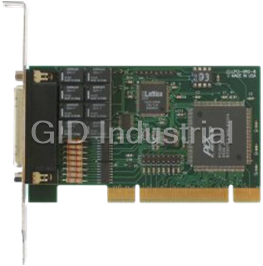
Half-size Low-Profile PCI bus compatible card that provides isolated digital input and output interf...
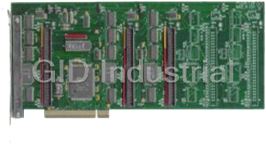
Parallel digital input/output cards designed for use in PCI-Bus computers. The same printed circuit ...
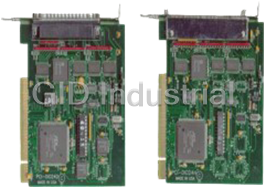
24-bit parallel, digital input/output cards designed for use in PCI-Bus computers. The difference be...

24-bit parallel, digital input/output cards designed for use in PCI-Bus computers. PCI-DIO24H are vi...
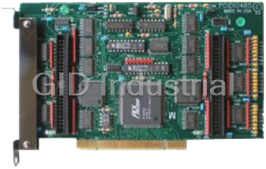
24-bit parallel digital input/output cards designed for use in PCI-Bus computers. The card is 6.9 in...



 Manufacturers
Manufacturers





What they say about us
FANTASTIC RESOURCE
One of our top priorities is maintaining our business with precision, and we are constantly looking for affiliates that can help us achieve our goal. With the aid of GID Industrial, our obsolete product management has never been more efficient. They have been a great resource to our company, and have quickly become a go-to supplier on our list!
Bucher Emhart Glass
EXCELLENT SERVICE
With our strict fundamentals and high expectations, we were surprised when we came across GID Industrial and their competitive pricing. When we approached them with our issue, they were incredibly confident in being able to provide us with a seamless solution at the best price for us. GID Industrial quickly understood our needs and provided us with excellent service, as well as fully tested product to ensure what we received would be the right fit for our company.
Fuji
HARD TO FIND A BETTER PROVIDER
Our company provides services to aid in the manufacture of technological products, such as semiconductors and flat panel displays, and often searching for distributors of obsolete product we require can waste time and money. Finding GID Industrial proved to be a great asset to our company, with cost effective solutions and superior knowledge on all of their materials, it’d be hard to find a better provider of obsolete or hard to find products.
Applied Materials
CONSISTENTLY DELIVERS QUALITY SOLUTIONS
Over the years, the equipment used in our company becomes discontinued, but they’re still of great use to us and our customers. Once these products are no longer available through the manufacturer, finding a reliable, quick supplier is a necessity, and luckily for us, GID Industrial has provided the most trustworthy, quality solutions to our obsolete component needs.
Nidec Vamco
TERRIFIC RESOURCE
This company has been a terrific help to us (I work for Trican Well Service) in sourcing the Micron Ram Memory we needed for our Siemens computers. Great service! And great pricing! I know when the product is shipping and when it will arrive, all the way through the ordering process.
Trican Well Service
GO TO SOURCE
When I can't find an obsolete part, I first call GID and they'll come up with my parts every time. Great customer service and follow up as well. Scott emails me from time to time to touch base and see if we're having trouble finding something.....which is often with our 25 yr old equipment.
ConAgra Foods